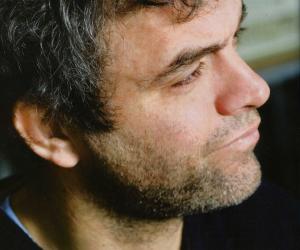Piet Hein Eek has been turning scraps of wood into distinctive designer furniture since long before the sustainability of materials became the zeitgeist it is today.
It was for his graduation project at the Design Academy Eindhoven in 1990 that he first used scraps of wood for his Scrapwood series of cabinets. Since then, the Dutch designer has established himself as one of the foremost green furniture designers in Europe.
Instead of form follows function, Eek’s process is driven by forms follows material. The materials are central to all of Eek’s creations, which give a new life to different types of wood. Eek believes that it is the duty of every designer to think about materials and engage with them in a responsible way.
While the green-loving 'reduce, reuse, recycle' ethos has always been a priority for Eek, he explains that his production process is slightly more nuanced than that. “It’s not just about recycling, it’s about a respect for the materials”.
Eek goes on: “The problem with many ecological discussions is that we want to consider the environment but we also still want to consume as much as we did before and we think recycling fixes all of that. But recycling still suggests the discarding of something to make room for something new.”
The focus of design, Eek believes, should rather be on creating products that are both aesthetically functional and functionally durable. Furniture needs to have the kind of appeal that transcends trends and taste, with quality materials and craftsmanship that support this ideal.
For Eek a better product is also one in which the client recognises him or herself, explaining that people need to trust a product or an object before they will buy it. As such, Eek has come to be recognised for his unique ability to translate conversations, or rather abstract concepts, into tangible design pieces. “I simply make what people tell me to make and then they are surprised and say ‘this is exactly what we talked about’”. Eek explains this “skill” simply as part of a storytelling process. “Every product is a story, rather than a stylistic form.”
It is at this intersection that designers are able to make a difference, Eek believes. “Designers are generalists. Designers can be involved in every aspect of the creation of a product or object, from the identity to the consumer, and so the designer can influence the choice of materials and the production process.”
The 'generalist approach' is one that Eek himself follows in his Eindhoven studio where he is involved in every aspect of the furniture design process, from the identity of the product in the conceptual phase to the branding and marketing of the final product. “For me this is the best way of doing it and it contributes to a better product.”
Materials and processes aside, Eek believes designers are ideally suited to bringing about social and economic development in the world. “It’s simple: Designers are generalists that interpret the world around them. Designers are educated to think about the whole process of making and so they are able to see different problems and opportunities that might help save the world.”
Piet Hein Eek will be speaking at the 2012 Design Indaba Conference from 29 February to 2 March 2012.













